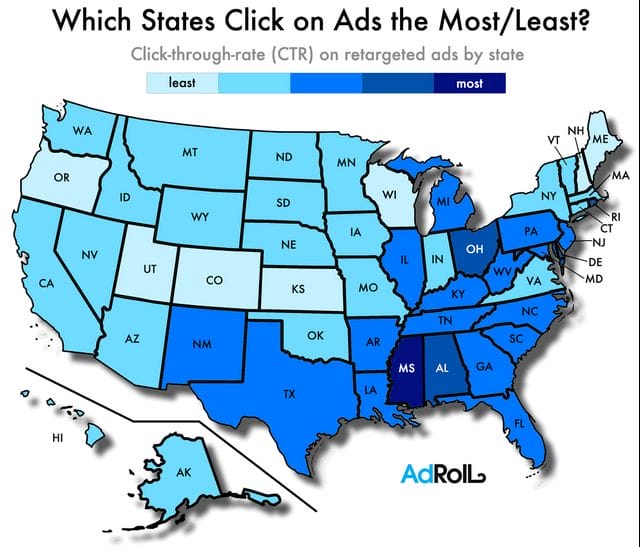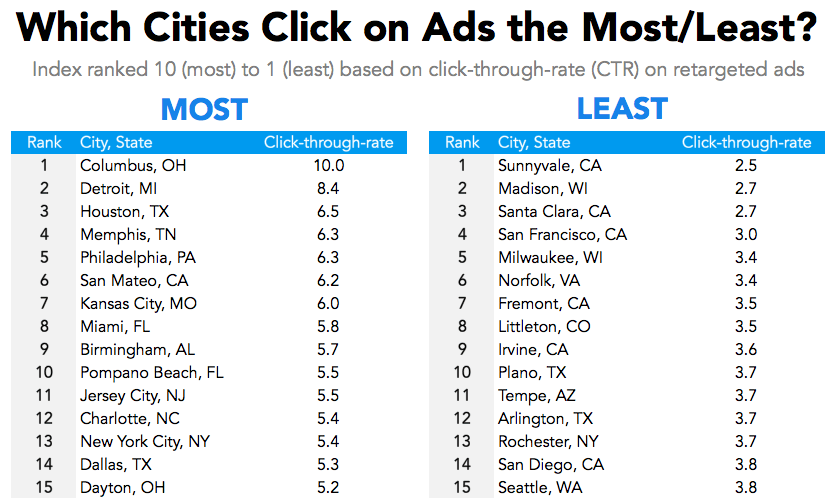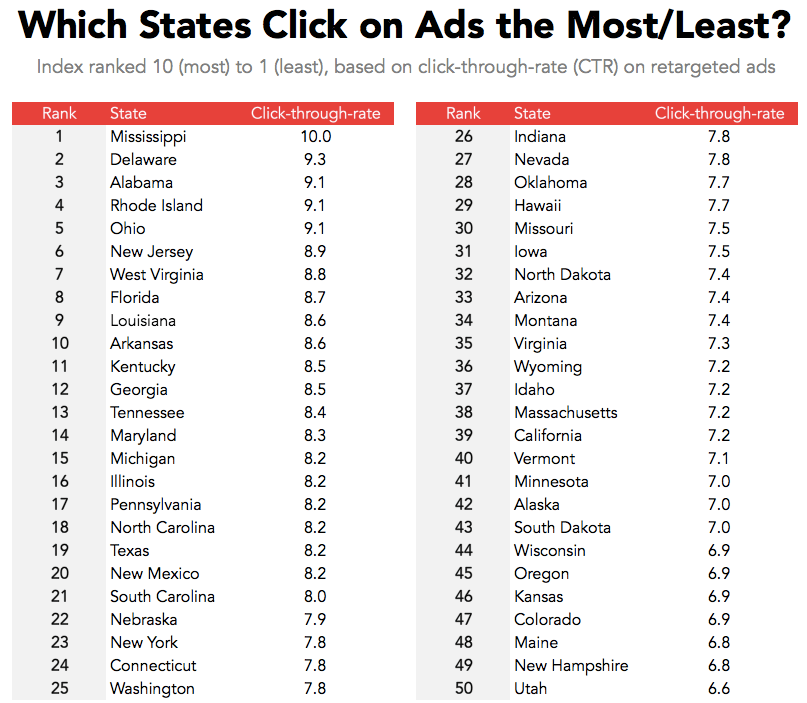
This post is adapted from the blog of AdRoll, a Priceonomics customer. Does your company have interesting data? Become a Priceonomics customer.
![]()
On October 27, 1994, the world’s first Internet ad graced computer screens across America. Small, rectangular, and multi-colored, it bore an ominous message that had nothing to do with its creator, AT&T: “Have you ever clicked your mouse right here? YOU WILL.”
Miraculously, 44% of those who saw the ad clicked on it.
This AT&T ad, which appeared on hotwired.com in 1994, is considered to be the first ever on the Internet.
While digital advertising has moved far beyond measuring just clicks, it’s still an interesting metric that happens to be attached to everything in the digital world. Today, this metric is measured with a formula called click-through-rate (CTR) — or the total number of times an ad is clicked — an approach Google popularized with search ads. The CTR is determined by dividing how many times an ad is clicked on by the the total number of times people are exposed to it (impressions). CTRs can vary widely, depending on the type of ad you run. Or, as our data shows, even the geographic location of where the ads appear.
This data was provided by AdRoll, a Priceonomics customer that provides retargeting ads and analyzes their performance. The service shows ads to people, featuring products from online stores they’ve shopped at or browsed the past. Only around 2% of shoppers typically buy an item during an initial visit to an ecommerce site; retargeting is a way to bring back the other 98% when they’re ready to buy. It’s a wealth of data about who actually clicks on ads.
We were curious to see if there was any geographic variation in how often shoppers click on ads, so we dove into the data. First, we compiled the click-through-rates of residents in the 100 cities for which we had the most data available. Then, we used this data to create a simple “click-through index” (10 = most likely to click on ads, and 1 = least likely to click on ads). Here’s what we found:

Data via AdRoll
Denizens of Columbus, Ohio click on ads at a rate of more than twice the national average. Detroit, Michigan trails slightly behind.
At the other end of the spectrum, people in Sunnyvale, California click on ads the least — about 75% less often than people in Columbus, and 43% less than the average American. With the exception of San Mateo, CA (which clicks on ads at a surprisingly high rate), most of California’s technology hubs (Sunnyvale, Santa Clara, San Francisco) have similarly low click-through-rates on ads.
On a state level, there appears to be an even clearer split between those who click on ads and those who don’t:

Data via AdRoll
Mississippians takes the cake, considerably out-ranking Delaware residents in second. Conversely, those in Utah and New Hampshire seem to be click-averse.
People in the South — particularly the deep South (Georgia, Alabama, South Carolina, Mississippi, and Louisiana) — appear to click on ads at a higher rate than those in the West. When mapped out, this difference is particularly pronounced:

The South, however, does not have a monopoly on higher click through rates on ads. Ohio, Rhode Island, and Delaware all rank in the top 10 states that are most like to click on ads. Perhaps most notable, the Western and Northern states have much lower advertising clickthrough rates than the South and Northeast.
Overall, the click-through-rates we see today are a far cry from those posted by the first Internet ad — though, when you consider that there are 266.4 million Internet users in the United States today, even just a small percentage of click throughs can translate to considerable business.
All of this analysis makes one question the validity of using CTR as a success measurement for digital advertising. Many platforms like Google, Yahoo, and AdRoll typically take into account other metrics like views of ads and conversion rates to provide a better gauge for success. Retargeting maybe be an effective way to re-engage your visitors all across America, but as this data indicates, using CTR only is probably not the best way to determine the success of any given campaign — unless it’s in the Deep South.
For our next post, we profile history’s greatest media hoaxer. To get notified when we post it → join our email list.
![]()
Note: If you’re a company that wants to work with Priceonomics to turn your data into great stories, learn more about the Priceonomics Data Studio.




